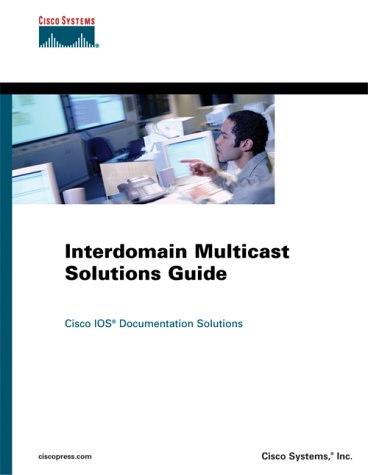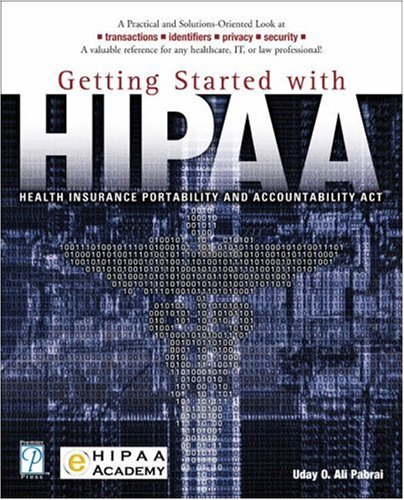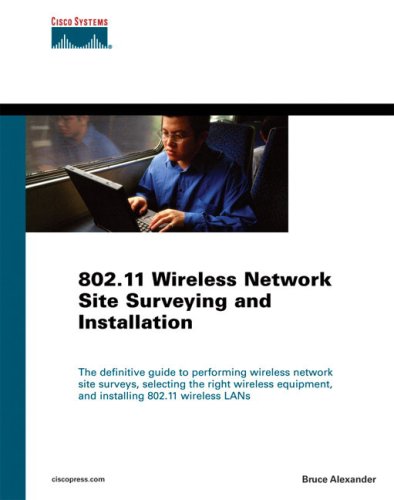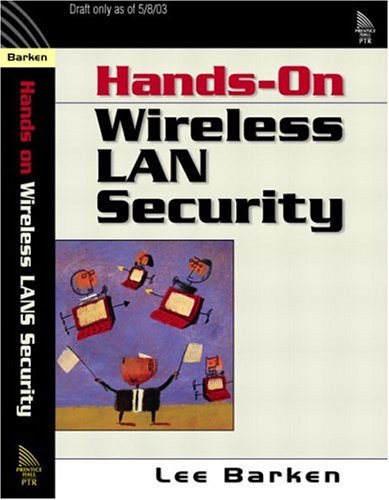Vilho Räisänen9780470847930, 0-470-84793-X
Table of contents :
Contents……Page 3
1 Drivers for the Adoption of Multi- service Networks……Page 25
1.1 CUSTOMER PERSPECTIVE……Page 26
1.2 NETWORK OPERATOR PERSPECTIVE……Page 28
1.3 SERVICE PROVIDER PERSPECTIVE……Page 30
1.4 SUMMARY……Page 31
2 Service Quality Requirements……Page 33
2.1 SERVICES ON THE INTERNET……Page 36
2.2 DEFINITION OF A SERVICE……Page 40
2.2.1 End user service versus provider- level services……Page 42
2.2.2 About service instances and service events……Page 44
2.2.3 Reference model for this section……Page 46
2.3 SERVICE QUALITY ESTIMATION……Page 47
2.3.1 Measures of end user experienced service quality……Page 48
2.3.2 Recency effect……Page 50
2.3.3 Psychological factors……Page 51
2.4.1 Choice of transport protocols……Page 52
2.4.2 Throughput adaptability of services……Page 53
2.5.1 Service quality characterizations in standards……Page 54
2.5.2 Availability of service……Page 57
2.5.3 Continuity of service……Page 58
2.5.4 Delivery time end- to- end……Page 59
2.5.5 Throughput……Page 62
2.5.6 Support for continuous service data unit transmission……Page 63
2.5.7 Reliability of service delivery……Page 66
2.5.8 Support for variable transfer rate……Page 68
2.5.9 Generic considerations related to service requirements……Page 69
2.6 SERVICE QUALITY DESCRIPTORS……Page 71
2.6.1 Measurement- based determination of traffic profile……Page 73
2.7 SUMMARY……Page 74
3 Network Mechanisms for Multi-service Quality Support……Page 77
3.1 INTRODUCTION TO NETWORK QUALITY SUPPORT……Page 78
3.2 POLICING OF TRAFFIC AT INGRESS……Page 82
3.3 ABOUT LAYERS……Page 85
3.4 TYPES OF NETWORK SUPPORT FOR SERVICE QUALITY……Page 86
3.4.1 Capacity reservation……Page 88
3.4.2 Differentiated treatment……Page 89
3.4.3 Differentiation of service quality instantiation……Page 91
3.4.4 Summary of generic network service quality support mechanisms……Page 92
3.5 SERVICE SUPPORT IN ATM……Page 93
3.5.2 Summary of ATM service support……Page 94
3.6 SERVICE SUPPORT MODELS IN INTERNET PROTOCOL……Page 95
3.6.1 Best effort service model……Page 96
3.6.2 Controlled- load service support……Page 98
3.6.3 Guaranteed QoS support……Page 99
3.6.4 RSVP……Page 100
3.6.5 Statistical QoS: DiffServ model……Page 101
3.6.6 Summary of IP QoS service models……Page 107
3.7 ROUTING IN IP NETWORKS……Page 109
3.7.1 On addressing……Page 110
3.7.2 IP routing protocol- based methods……Page 111
3.7.3 ATM overlays……Page 112
3.7.4 Lower layer tunnels: MPLS……Page 113
3.8 LINK LAYER ISSUES……Page 114
3.8.1 Performance……Page 116
3.8.2 A note on scheduling……Page 117
3.9 SUMMARY……Page 118
4 Traffic Engineering for Multi- service IP Networks……Page 121
4.1 TRAFFIC ENGINEERING……Page 122
4.1.1 Context of traffic engineering……Page 124
4.1.2 The traffic engineering process……Page 126
4.1.3 Obtaining performance data from the network and analysing it……Page 128
4.1.4 Performance enhancement……Page 137
4.1.5 Scope of network optimization……Page 140
4.2 IP ROUTING CONTROL AND TRAFFIC ENGINEERING……Page 141
4.2.1 Optimizing routing based on service quality characteristics……Page 143
4.2.2 Traffic engineering using MPLS……Page 144
4.2.3 Traffic engineering using IP routing protocols……Page 147
4.2.4 Summary……Page 148
4.3 CONFIGURATION……Page 149
4.3.1 Policy- based management……Page 150
4.3.2 Policy- based management of DiffServ……Page 153
4.4 SUMMARY……Page 156
5 Mapping Service Requirements to Network Resources……Page 157
5.1 SCOPE OF THIS CHAPTER……Page 159
5.2.1 Architecture……Page 161
5.2.2 QoS model……Page 164
5.2.3 Summary……Page 165
5.3 QBONE……Page 166
5.3.1 Service support models……Page 167
5.3.2 Summary……Page 168
5.4 3GPP QOS MODEL……Page 169
5.4.1 QoS model……Page 170
5.5 OTHER MODELS……Page 172
5.6 UTILITY- BASED ALLOCATION OF RESOURCES……Page 173
5.7 GENERIC RESOURCE ALLOCATION FRAMEWORK……Page 176
5.7.1 Signalling……Page 178
5.7.2 Mapping of services onto network resources……Page 180
5.7.3 Network quality support configuration for DiffServ……Page 184
5.7.4 End- to- end service quality budgets……Page 187
5.7.5 Optimization of resource allocation……Page 198
5.8 SUMMARY……Page 200
6.1 MODELS FOR SERVICE LEVEL MANAGEMENT……Page 203
6.1.1 Areas of service level management……Page 204
6.1.2 Layers of service level management……Page 205
6.1.3 Models for managed data……Page 207
6.2.1 Interests of the customer……Page 208
6.2.2 Network operator viewpoint……Page 211
6.2.3 Service definition……Page 212
6.2.4 Reporting……Page 214
6.3 SERVICE LEVEL AGREEMENTS……Page 215
6.3.1 SLA and DiffServ……Page 217
6.3.2 SLA contents……Page 220
6.3.3 End user SLAs……Page 221
6.4 END- TO- END SERVICES……Page 222
6.4.1 Assumptions about connection endpoints……Page 224
6.4.2 Assumptions about per- domain service management……Page 228
6.4.3 Requirements for end- to- end service management……Page 230
6.5 SERVICE BROKERS AND CHARGING……Page 231
6.6 SUMMARY……Page 233
7 Measurements……Page 235
7.1 TRAFFIC CHARACTERIZATION……Page 237
7.2 NETWORK MONITORING……Page 240
7.2.1 Troubleshooting measurements for services……Page 241
7.3 TRAFFIC CONTROL……Page 243
7.4 DEFINITION OF MEASURED CHARACTERISTICS……Page 244
7.5.1 Measurement interfaces……Page 246
7.5.2 Measured characteristics……Page 247
7.6.1 Obtaining performance data from network elements……Page 249
7.6.2 Monitoring a link……Page 251
7.6.3 Monitoring a route or node pair……Page 252
7.7.1 Measuring entity……Page 254
7.7.2 Interface to measuring entity……Page 255
7.7.3 Measurement control and analysis function……Page 256
7.8.1 QBone measurement architecture……Page 259
7.8.2 Nokia Research Center measurement architecture demonstrator……Page 265
7.9 SUMMARY……Page 272
8 Mechanisms for Dynamic Service Quality Control……Page 275
8.1 PREVIOUS STUDIES……Page 278
8.1.1 Two- bit DiffServ architecture……Page 279
8.1.2 Bandwidth broker in QBone architecture……Page 280
8.1.3 QoS Agents……Page 285
8.2 GENERIC MODEL……Page 287
8.2.1 Service quality support instantiation control……Page 289
8.2.2 Domain control……Page 292
8.2.3 Inter- domain signalling……Page 295
8.2.4 Link to service admission control……Page 297
8.3 SUMMARY……Page 298
9 Case Study: Service Quality Support in an IP-based Cellular RAN……Page 299
9.1 MOTIVATION FOR USING IP- BASED TRANSPORT IN CELLULAR RAN……Page 300
9.2.1 PLMN transport architecture……Page 303
9.2.2 IP RAN transport architecture……Page 305
9.2.3 Handover traffic……Page 306
9.2.4 Service mapping in IP RAN……Page 307
9.3 TRAFFIC ENGINEERING IN ALL- IP RAN……Page 309
9.3.1 Capacity planning……Page 310
9.3.2 Capacity management……Page 313
9.3.3 Traffic management……Page 315
9.4.1 Policy- based management……Page 316
9.4.2 Measurements……Page 318
9.5 INTER- OPERATION WITH IP- BASED BACKBONES AND ROAMING NETWORKS……Page 319
9.6 SUMMARY……Page 320
10 Summary……Page 322
10.1 IP AS THE CONVERGENCE NETWORK……Page 323
10.2 DIFFSERV……Page 324
10.2.1 Complementary technologies for DiffServ……Page 325
10.3 SERVICE LEVEL MANAGEMENT……Page 326
10.4 TRAFFIC ENGINEERING……Page 327
10.5 POTENTIAL FUTURE DEVELOPMENT DIRECTIONS……Page 328
Index……Page 345







Reviews
There are no reviews yet.